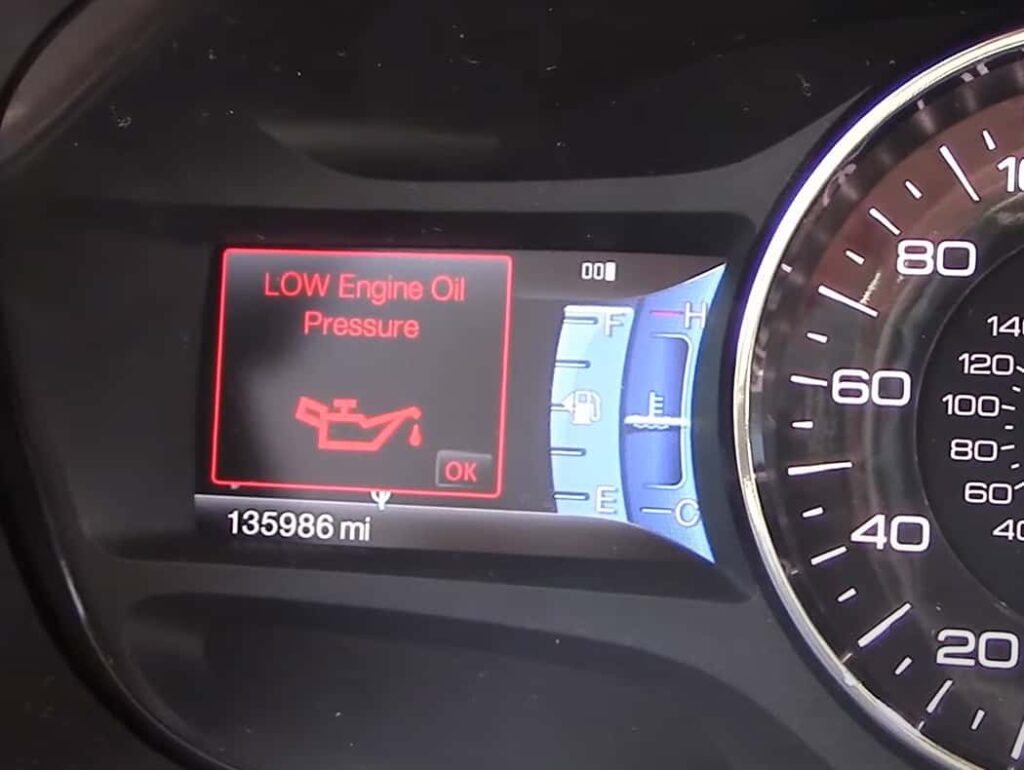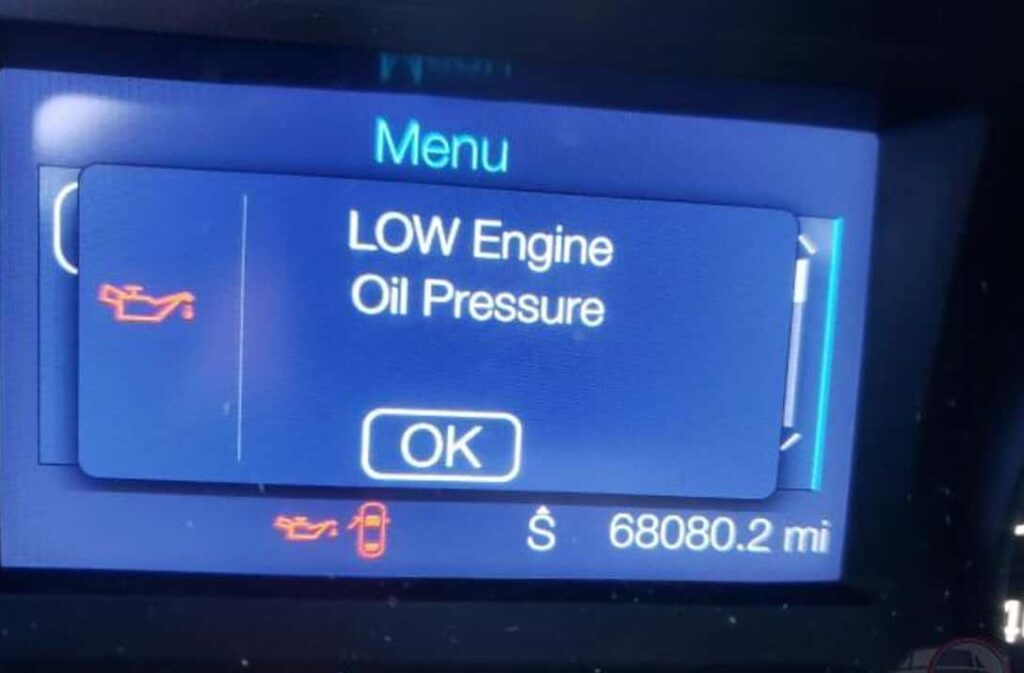Perhaps you have experienced a Ford Edge low engine oil pressure and are wondering what could be causing this.
Among the most serious of all issues that are likely to happen to your engine is a low oil pressure. When this occurs, it is highly likely for your engine to simply seize up. This is why the moment you notice that you have the oil pressure light switched on, this means that at any time, your engine is at risk of locking up.
Thus, the safest thing for you to do is to pull over and stop your engine until you have the issue diagnosed and resolved appropriately.
Today, we will cover the reasons behind a Ford Edge low engine oil pressure, why this happens, and what you can do about it.

Contents
Causes of Ford Edge Low Engine Oil Pressure
Let us look into these typical causes of a low engine oil pressure with your Ford Edge. Here they are:
1. Lack of oil
The most common cause of a low engine oil pressure is the lack of oil. What this means is that your engine oil has gone lower than it should, or it may already be empty. Hence, you should make it a point to fill it right up. Avoid driving your vehicle when the engine oil is low. It should be your top priority to get more oil to top up since the crankcase will be in peril, causing your engine to lock up.
2. Faulty oil pump
Next up, we have an oil pump issue. This component takes your oil from your oil pan and then pumps it to the engine. When your oil pump is already malfunctioning, it no longer becomes capable of pumpkin oil. There is also a screen or a filter in your oil pump, and this prevents debris from getting inside. But when there is a lot of debris in the long run, this will cause a deterioration to your pump’s capacity.
3. Air in your oil
Another common reason for a Ford Edge low engine oil pressure issue is having air in your oil. When you have a very low oil level in your pan, then air can enter into the pump and cause the oil to aerate. It is much like froth to your beer or cappuccino – when you have more air in the oil, it becomes foamy or frothy. As a result, be sure to prevent having air getting into the oil pump to prevent this aeration concern.
4. Dirt in oil
You want to make sure that your engine oil is clean and dirt-free. This is why regular oil change is essential as this prevents any debris or gunk on the interior that will then accumulate in your crankcase. Moreover, the oil may simply become dirty, which is why it is unable to cycle through your engine correctly. Hence, low oil pressure occurs.
So, if you are uncertain when you had your oil changed, or you have performed so much towing of heavy loads, then you should make it a point to get an oil change. Otherwise, the engine oil pressure is likely to become too low.
5. Pickup tube issue
Your Ford Edge has a tube, which is responsible for taking oil from your pan and into the oil pump. When the tube falls out eventually, it no longer makes it possible for the oil to enter your oil pump.
Hence, be sure to inspect the tube and that it is still working as it should.
6. Oil filter clog
Many engines have a bypass valve that allows oil to keep flowing to your engine. This is a concern that can also impact the integrity of your Ford Edge’s engine oil pressure. When there is so much resistance from your oil filter, this activates the bypass valve. Since it can only handle so much engine oil, the oil light becomes triggered when there is more than it can handle.
Read More: Ford Edge Wheel Bearing Recall – Important Things You Should Know!
Your Next Steps

If you experience these problems with your Ford Edge low engine oil pressure, then you need to first check your oil level. It is the initial step to take when it comes to diagnosing the low pressure to the oil. When you have a drastically low oil level, then you should top up.
But then again, there may be some reasons why this happens. It could be a leak or some other issue. This is why you need to inspect for any leaks that may be causing the engine oil level to drop quickly.
Also, you should check the sensor that is used for reading the oil level. If your vehicle’s sensor is faulty, then the reading automatically becomes a false low pressure, which is then sent to the ECM. So, be sure to inspect the sensor and maybe change it when there is an issue.
And of course, nothing beats taking your vehicle to the mechanic for further inspections. When you allow the oil pressure to stay low and keep driving your car, this can jeopardize not just your engine but also your life!
A low oil pressure issue requires prompt and thorough attention. When you have a problem such as this one, it is best to get it resolved sooner than later. Otherwise, your engine runs the risk of severe damage, which can accumulate further issues and more expensive repairs.
While your car’s vital fluids are essential, there are those that need a special kind of maintenance such as the engine oil. This is your vehicle’s lifeblood, and you need to make it a priority to address any issue with it to stay safe on the road. Pay close attention to warning lights as well as the message your sensor sends out to determine what is going on with your vehicle and take the right action sooner than later.